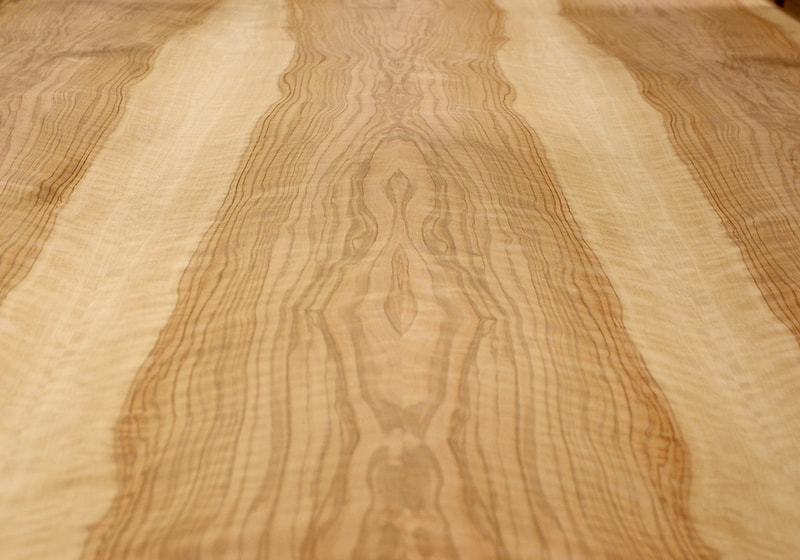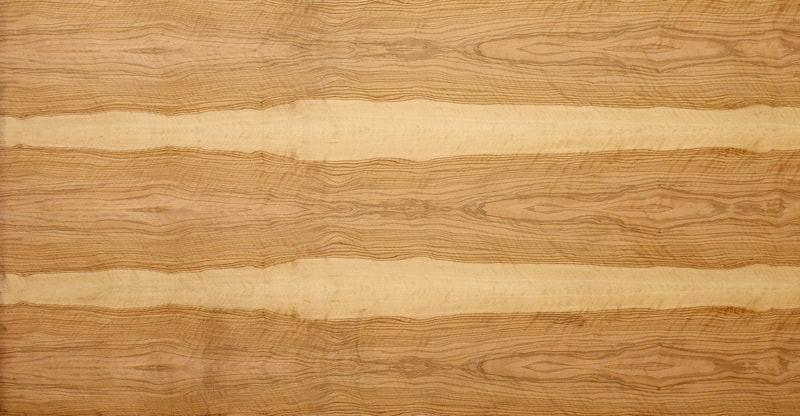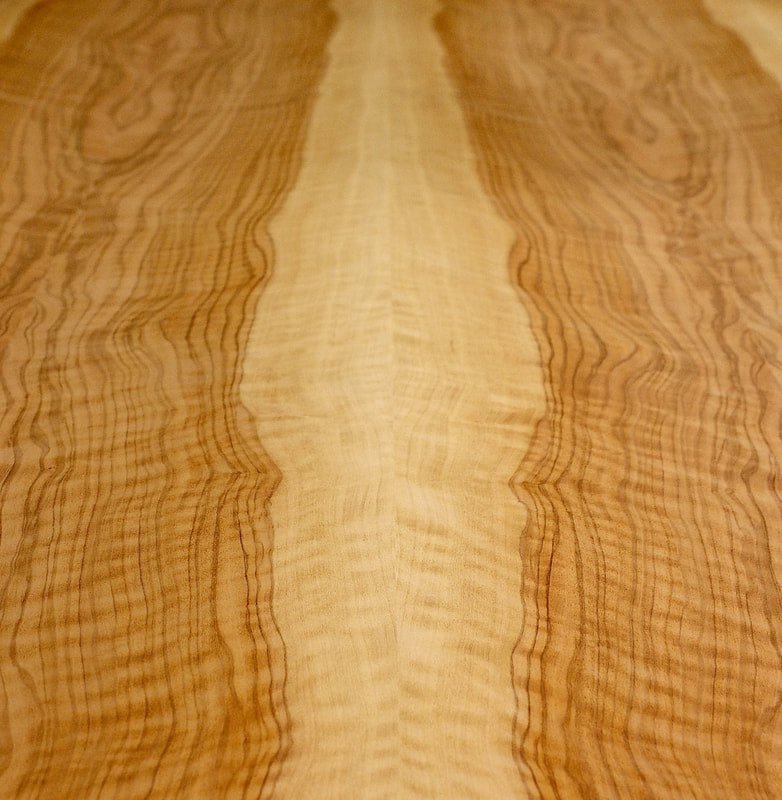Olivewood, Olea europaea
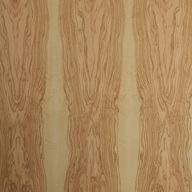
Has a cream or yellowish brown body with darker brown or black contrasting grain lines. Color tends to deepen with age. Olive is very commonly figured with curly or wavy grain, burl, or wild grain.
Uses - Overall, Olive is easy to work, though wild or interlocked grain may tear out while being surfaced. One of the only downsides of Olive is its high movement in service: its shrinkage rates are quite high. Turns superbly. Glues and finishes well.
Uses - Overall, Olive is easy to work, though wild or interlocked grain may tear out while being surfaced. One of the only downsides of Olive is its high movement in service: its shrinkage rates are quite high. Turns superbly. Glues and finishes well.
VeneerFleece & Flex 48 x 96
|
Plywood3/4 48 x 96 MDF
3/4 48 x 120 MDF |
LumberN/A
|
EdgebandingN/A
|
Olivewood Tropical A.K.A Mozambique, Guibourtia ehie
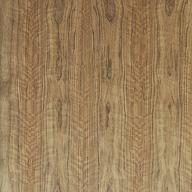
Varying shades of yellowish to reddish brown body with darker brown, gray, or black stripes. Sapwood is a pale yellow. Commonly seen with a curly or rippled grain pattern.
Uses - Overall a fairly easy wood to work, though Ovangkol contains silica and can therefore dull cutters prematurely. Also, if the grain is interlocked, or if there is other figure present in the wood, planing and other machining operations may be troublesome and cause tearout. Turns, glues and finishes well.
Uses - Overall a fairly easy wood to work, though Ovangkol contains silica and can therefore dull cutters prematurely. Also, if the grain is interlocked, or if there is other figure present in the wood, planing and other machining operations may be troublesome and cause tearout. Turns, glues and finishes well.
VeneerN/A
|
Plywood3/4 48 x 108 MDF A-1
|
Lumber6/4
10/4 Live edge Figured |
EdgebandingN/A
|

